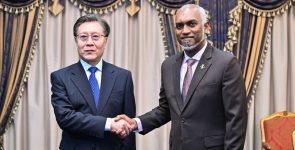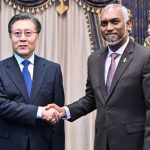
The head of the Maldives Monetary Authority’s Financial Intelligence Unit (FIU), Abdulla Ashraf, was removed from his position and reassigned to lead the Risk and Compliance Department last Thursday. His replacement, Ismail Sajid, will formally take over as FIU head this week.
According to the central bank, the decision is part of broader structural changes to strengthen management. Sajid, who most recently served on the Tax Appeal Tribunal before resigning in July, has not previously held a role within the FIU.
The timing of the leadership change has raised eyebrows. On the same day Ashraf was removed, a document purporting to be an FIU intelligence report was leaked on social media. The report detailed suspicious financial transactions involving companies allegedly linked to Baarah MP Ibrahim Shujau. The police have since confirmed that an investigation into the leak is ongoing. Shujau, for his part, has denied the authenticity of the document.
This is not the first time Ashraf has been removed from the FIU. In 2018, he was dismissed following his submission of a document to police and the Anti-Corruption Commission regarding suspicious transactions linked to the Maldives Marketing and Public Relations Corporation (MMPRC) during Presidnt Yameen’s administration. He was reinstated in February 2023.
The repeated removals of Ashraf, particularly following the circulation of sensitive information implicating powerful individuals, prompt broader concerns about the independence of the MMA and its capacity to act autonomously in financial oversight.
The FIU was established to combat money laundering, terrorist financing, and illicit financial activity, with the central bank governor holding the sole authority to appoint or remove its head. But the lack of transparency surrounding the sudden reassignment, especially one coinciding with the emergence of politically sensitive documents, risks eroding public trust in the institution’s impartiality.
While the MMA maintains that these changes are part of internal restructuring, the optics surrounding the decision raise uncomfortable questions. Was the move part of routine bureaucracy, or does it reflect a pattern of political interference in the central bank’s most sensitive unit?
As scrutiny around governance and financial transparency continues to grow, the need for clarity on institutional independence is becoming harder to ignore.













